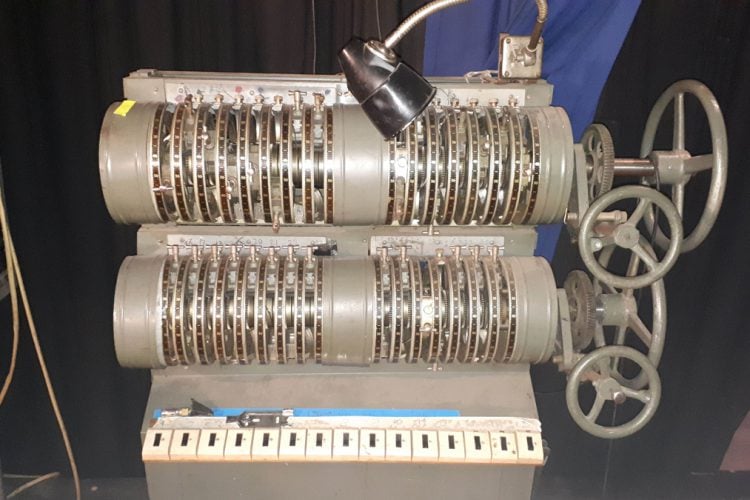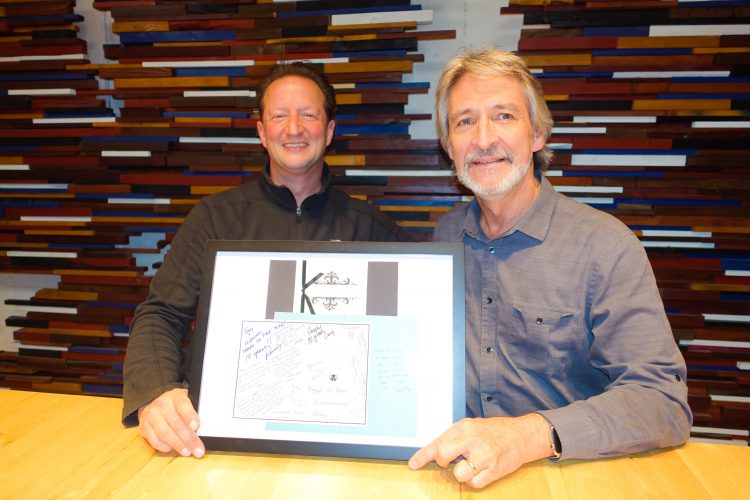Downplaying a forty-year career that featured tours with Pink Floyd and a string of Spielberg movies, Brian Lukas calls himself “just a lighting guy.”
Recovering from a recent knee replacement surgery that he attributes to “years of pulling feeder cable and lugging lights around,” Lukas took some time to look back on his early years in New York City. After stints as an electrician and board operator off-Broadway and in community theater, he was hired by Tom Field Associates New York office. When that operation was sold to See Factor he found himself, like many others before him, enrolled in what would later be known as “Bob See’s University.”
One of the courses there was an early Grateful Dead show. “We loaded into Radio City Music Hall about a week before the shows—ten nights with the last three broadcast live,” recalls Lukas. “Every day we brought in more lighting gear. Candice Brightman was their LD and she just kept adding more lights and trussing. My dimmer world grew from a few racks to about 25. The shows were great but we ran out of power. The first broadcast night we lost a 600 amp fuse. The comedians Tom Davis & Al Franken were emceeing the show. They were live doing a bit to fill the time just in front of that panel backstage. The electricians had to literally push them out of the way to change the fuse. One of the comedians is now a U.S. Senator. Go figure.”
With an abnormally high level of electrical knowledge, picked up from a few semesters at the University of Colorado Boulder and on the job training with a NYC contractor, Lukas became the dimmer tech on See Factor tours with Ted Nugent, Black Sabbath, and Aerosmith. “These were the days before compact dimmers and lightweight cable – you couldn’t fit the control systems into this room,” he laughs, indicating his spacious Studio City, Calif. living room, before adding “I was so happy when we got the LMI dimmer racks.”
Life on the road in the ‘70s took its toll and by 1988, following the Pink Floyd Delicate Sound of Thunder tour, he was ready for a change. The advent of MTV with its constant thirst for music videos was the carpool lane to a new career in film and television and Lukas adapted quickly from road to studio life.
“I was lucky to learn from some of the best gaffers in Hollywood,” says Lukas. (A gaffer on a Hollywood film set acts much like a lighting crew chief on a concert tour or a production/master electrician in theater.) “Guys like David Devlin, Jeff Murrell, Dino Parks, Jonathan Guerra, and Newton Termeer lit shows in their own way but always gave more than they were asked for. My rock ‘n’ roll training prepared me well to be a rigging gaffer on difficult shoots like There Will be Blood, The Lost World: Jurassic Park and Indiana Jones. The long hours in the mud and rain reminded me a lot of outdoor festivals,” says Lukas.
In film, a rigging gaffer is a member of the advance location team who set up the infrastructure of the shoot—including the lights per the gaffer’s request, generator locations, portable power, and distribution. Directors like to keep successful teams intact and Spielberg is no exception. With gaffer David Devlin, Lukas worked on a string of Spielberg movies until the production company figured out that comparable talent existed in Europe, where many of the features were to shoot. “That was sad,” says Lukas. “I really enjoyed touring there with concerts and films – you can’t beat the architecture and fine dining.”
Lately he has been re-united with many old pals from film and TV on the set of Grey’s Anatomy, shot on the ABC/Disney Prospect lot in Los Angeles. Now in its 14th season, the show may hold the record for use of ETC consoles. “We have a ton of ETC Source Four profiles in different beam angles and no less than seven Expression 3 consoles,” says Lukas. It’s living proof that Expression 3 still holds a place in the heart of the LA TV market.
With a lifetime of experience in electrical safety, rigging and control protocols, it’s no surprise that Lukas is called upon to teach these skills to fellow local Union members. “My experience is deep,” says Lukas with a touch of pride. “I wind up teaching a lot of techniques I learned on the road – it’s opened up a whole new world to me.” With the proliferation of LED fixtures and moving lights on the most basic of TV shoots, the lighting crews of the future must learn the syntax of networking, DMX architecture, and multi-channel programming. It looks like class will be in session for years to come.





